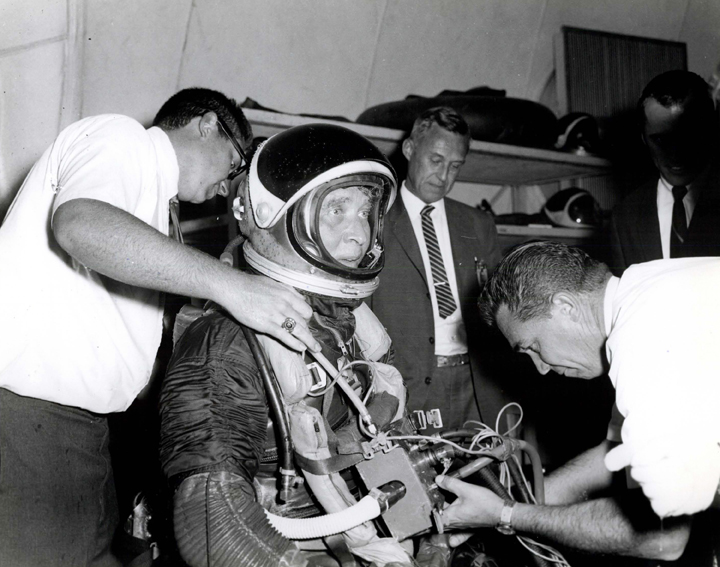Compromise as much as courage was key to the U.S.A. touching down on the moon first. Operation Paperclip rounded up scores of Nazi scientists at the conclusion of WWII, and brought them to America to make us preeminent in rockets, satellites, and ultimately, spaceships, without ever holding these men accountable for their atrocities. Chief among these unlikely American heroes was brilliant Wernher von Braun, who was portrayed to the American public as a scientist who was dispassionate about politics, just another pawn in the horrible Nazi game. Of course, that was far from the truth. From “The Rocket Man’s Dark Side,” Leon Jaroff’s 2002 Time report about the genius whose awful past was lost in space:
Still, he was apolitical, wasn’t he, and during the war had really only been pursuing his lifelong interest in rocketry. And hadn’t he fully redeemed himself with his great contributions to our space race with the Soviets?
That’s the gist of the official von Braun biography posted on the web site of NASA’s Marshall Space Flight Center, where under the directorship of von Braun, the mighty Saturn 5 rocket was developed. And it’s this sanitized biography that has roused the indignation of Tom Gehrels, a noted University of Arizona astronomer and pioneer in the program to discover and track Earth-threatening asteroids. A member of the Dutch resistance during World War II, Gehrels readily acknowledges von Braun’s contributions to the world of science, but is all too aware of the little-known dark side of both him and his brother Magnus. “They were Jekyll and Hyde characters,” Gehrels insists, “and the full truth ought to be known.”
It is Gehrels who has pieced together that truth, largely from interviews with surviving political prisoners who had been forced to build V-1s and V-2s under the supervision of the von Brauns in an underground complex near Nordhausen, Germany. These prisoners were housed in an adjacent concentration camp called Dora, and new arrivals were given the standard welcoming speech: ‘You came in through that gate, and you’ll leave through that chimney [of the crematorium].’
Indeed, some 20,000 died at Dora, from illness, beatings, hangings and intolerable working conditions. Workers, scantily clad, were forced to stand at attention in the biting cold during roll calls that went on for hours. Average survival time in the unventilated paint shop was one month. One prisoner told of being bitten on his legs by guard dogs. Presumably to test the effectiveness of a new medication, one of his legs was treated, the other allowed to fester and deteriorate.
For reasons best known to von Braun, who held the rank of colonel in the dreaded Nazi SS, the prisoners were ordered to turn their backs whenever he came into view. Those caught stealing glances at him were hung. One survivor recalled that von Braun, after inspecting a rocket component, charged, “That is clear sabotage.” His unquestioned judgment resulted in eleven men being hanged on the spot. Says Gehrels, ‘von Braun was directly involved in hangings.”•
Dr. Strangelove’s backstory—and salutes—were inspired by von Braun.
See also:
Tags: Leon Jaroff, Tom Gehrels, Wernher von Braun

